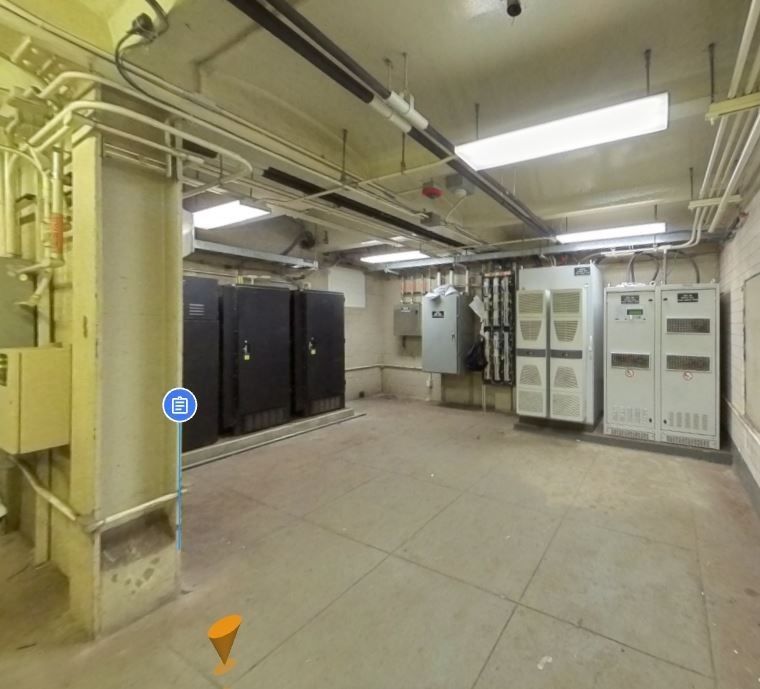
360 virtual tour technology: adding efficiency to managing projects

Imagine enabling your clients and teammates to perform detailed examinations of their project sites at the click of a mouse, from the comfort of their offices and with no need for time consuming and expensive site visits.
An applied technological service capability, 360-degree virtual tours document existing conditions of a project site by combining software and photographic images. The tours provide authorized client users with continual virtual access to detailed views of their facilities by logging into a host website. Currently used for surveying room and equipment layouts, the technology that delivers 360-degree virtual room tours are on the cusp of changing our industry by providing remote working environments for large and small spaces and changing work procedures such as progress reports, training and vendor pre-bid tours.
How it works
The site images are captured by placing 360-degree cameras on a tripod or a hard hat. The cameras capture multiple 360-degree images or video that are calibrated and coordinated with CAD drawings. Once the capturing is completed, the data is reviewed, and the images are processed using specialized software that creates a virtual tour. The digital replica of the project site is then loaded on the cloud and made available to authorized viewers on the team.
The degree of maintenance required to keep the virtual tours up to date depends on the frequency of changes made to the rooms. Updated images can be taken if a small change is made to the area. This can be date stamped and integrated into the existing tour as part of the permanent record. If changes are more significant, another site capture can be initiated, and the process repeated with the virtual tour date stamped for clarity.
Why it's used
The virtual tours save our clients time and money and more importantly, in the age of coronavirus, eliminate the need to gather onsite. While these tours were in the works before the pandemic, they advanced significantly over the past year and a half and have been particularly efficient in moving work forward, even when group gatherings were not possible.
We are currently using the 360-degree virtual tools to help determine equipment placements in the Metropolitan Transportation Authority-New York City Transit (MTA-NYCT)’s subway communications rooms. While placement may seem simple, many stakeholders, including communication professionals, security professionals and system maintenance professionals are involved in the decision – and all must agree with the equipment placement.
Through this tool, the entire NYCT team can see the current images of the space at the same time. The virtual tour is easily shared, it is stored in the cloud and is accessible to authorized users using regular security protocols on almost any browser and device with an internet connection. Users can zoom in or out, rotate the image and move through the room for a complete look, or to examine an object in closer detail. While 360-degree virtual tours do not replace engineering drawings and specifications, they are more cost effective than prior methods which called for repetitive site visits along with capturing and putting designs on paper.
This program began as a free demonstration in one of NYCT’s 500 communications rooms, progressed to a pilot program in 50 rooms and is expected to be implemented in those that remain. And the program’s success has NYCT considering its use in other areas including signal, electrical and elevator machine rooms. The technology is applicable to numerous other spaces including large facilities for MTA, or any other agencies across the nation or worldwide.
Into the future
The technology has capabilities for a wide range of uses, including tagging and linking equipment to other documentation such as URLs, as well as cataloging external data bases and enterprise management platforms which optimize maintenance records. The tours can be also used to familiarize team members and contractors with special conditions without requiring physical onsite access, training, internal progress meetings and vendor pre-bid tours.
Captured images have time and date stamps, which can be added to the original virtual tour to document new as-built conditions. This can be a helpful reference for professionals who will work on the next project in the area.
Devising solutions that quickly and efficiently meet our clients’ needs is one of the most important aspects of a successful project. Applying technology to advance 360-degree virtual tours may reshape the ways in which we meet these goals while delivering a faster and more coherent means of decision-making not just for transportation or transit projects, but also for all major infrastructure components across the country and around the world.